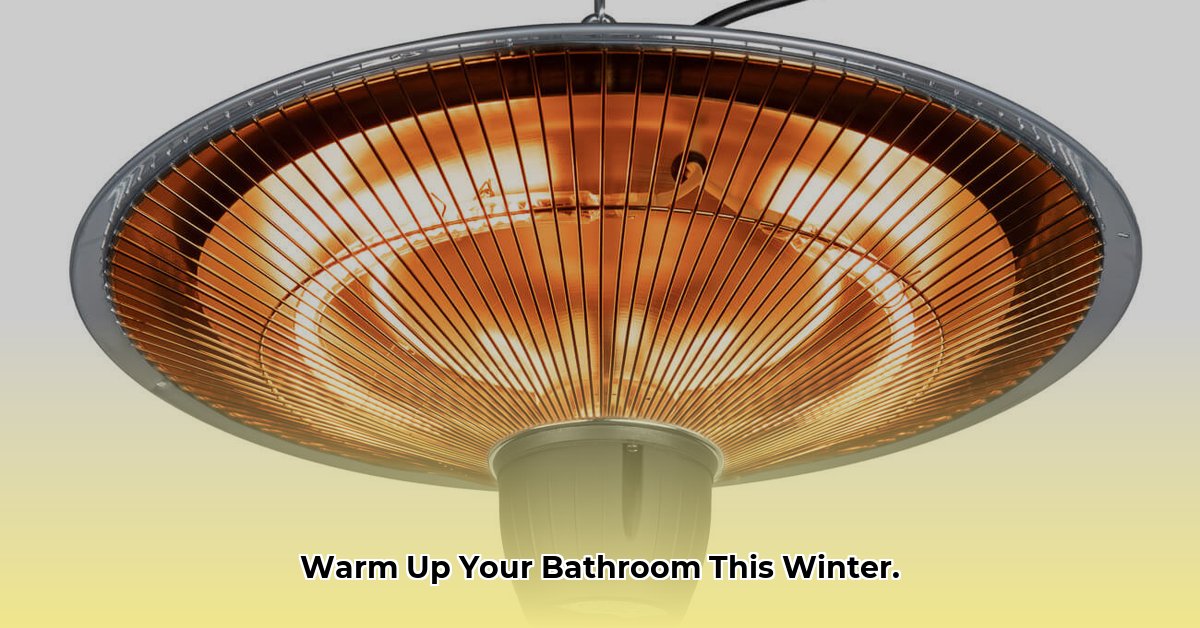Tired of shivering after a hot shower? Imagine stepping out into a toasty warm bathroom, no matter the season. This guide helps you find the perfect ceiling heater to make that dream a reality. We’ll explore different types, key features, and even guide you through installation. Whether you’re renovating or just seeking extra warmth, we’ve got you covered.
Warming Up Your Bathroom: Choosing the Right Ceiling Heater
Stepping out of a hot shower into a freezing bathroom isn’t pleasant. A good ceiling heater can transform your bathroom into a cozy retreat. But with so many options, choosing the right one can be overwhelming. This guide helps you navigate the world of bathroom ceiling heaters, finding the ideal one for your needs and budget.
Heater Types: Finding Your Perfect Match
Choosing a bathroom ceiling heater is like choosing the right coffee – you’ve got options!
Fan-Forced Heaters: Instant Warmth
These work like mini furnaces in your ceiling. A fan blows warm air down, providing quick heating. If you’ve experienced a blast of warm air from a hotel bathroom vent, it was likely a fan-forced heater. It’s a concentrated, cozy breeze designed to banish chills.
Radiant/Infrared Heaters: Gentle Warmth
These heaters use infrared technology, similar to the sun’s warmth. They directly warm objects and people, rather than the air. This can be more efficient, and you’ll feel the warmth instantly. Imagine stepping out of the shower and immediately feeling comforting warmth – that’s the magic of infrared.
Combination Units: The Multitaskers
For ultimate convenience, consider a combination unit. These combine heating with ventilation and often a light, saving space and simplifying your setup. It’s a versatile solution for any bathroom.
Key Features to Consider
Now you know the types, let’s explore features that can make or break your bathroom heating experience.
Heating Power (Wattage/BTUs): Sizing It Right
Wattage measures heating power. Larger bathrooms likely require higher wattage. BTUs (British Thermal Units) also measure heating capacity. A common guideline is 5-10 watts per square foot, but manufacturer specifications are key.
Airflow (CFM): Breathe Easy
CFM (cubic feet per minute) measures airflow for fan-forced and combination units. Good ventilation is crucial to remove moisture and prevent mold. A higher CFM generally means better ventilation.
Safety First: Essential Features
Overheat protection is a must in bathrooms. Look for automatic shutoff features. An ALCI (Appliance Leakage Current Interrupter) safety plug is essential to prevent shocks. The IP (Ingress Protection) rating, like IPX4, indicates water resistance. Higher is better, especially above showers.
Installation: DIY or Pro?
Some heaters are surface-mounted (easier DIY installation) and others are recessed (require more electrical work). If you are not comfortable with electrical work, hire a professional.
Noise Level: Sound Matters
A noisy heater can disrupt bathroom tranquility. Look for quiet models, especially if you value a peaceful atmosphere. Sone ratings measure noise levels. Lower sones mean quieter operation.
Smart Features: Tech-Savvy Comfort
Smart features, like remote controls and app integration, are convenient. Imagine preheating your bathroom before you wake up.
Installation Guide: A Step-by-Step Approach
Safety First! Turn off the power at the breaker box before any electrical work. If you’re not comfortable with electricity, hire a qualified electrician.
-
Plan: Measure your bathroom and choose the heater location, considering proximity to the shower, wiring, and obstructions. Check local electrical codes for compliance.
-
Wiring: Some heaters require new wiring. Consult an electrician if needed. Ensure the circuit can handle the added load.
-
Mounting: Follow the manufacturer’s instructions to secure the mounting bracket and attach the heater.
-
Wiring (Heater): Connect the heater wiring according to the provided diagram. Ensure all connections are secure.
-
Testing: Restore power and test the heater.
Safety is Paramount
-
Professional Installation: If unsure about any installation step, hire a licensed electrician.
-
Moisture Protection: Use heaters rated for damp locations (check the IP rating).
-
Clearances: Keep flammable materials away from the heater.
-
Child Safety: Consider guards if you have children.
Brand and Model Comparisons
| Feature | Model A | Model B | Model C |
|---|---|---|---|
| Type | Radiant | Fan-forced | Combo (Light/Fan/Heater) |
| Wattage | 1500W | 1300W | 1200W |
| Sones | 0.5 | 2.0 | 1.5 |
| Smart Home | Yes | No | Yes |
| Estimated Price | $300 | $200 | $250 |
| Pros | Quiet, even heat | Fast heating, affordable | Multifunctional, space-saving |
| Cons | Slower heating | Can be noisy | More complex installation |
Brands like Broan-NuTone and Delta Breez are well-regarded. Research different models to find what suits your needs and budget. Advancements in heating technology may lead to even more efficient models.
Pricing and Availability
Bathroom ceiling heaters are available at home improvement stores and online. Prices range from around $50 for basic models to several hundred dollars for advanced combination units. Shop around for the best deal.
Making Your Final Decision
Choosing the right heater involves balancing budget, desired features, and bathroom requirements. Consider your lifestyle. Do you need instant heat, or would gradual warmth suffice? With planning and research, you can create a warm and inviting bathroom sanctuary.
Frequently Asked Questions
-
How do I determine the right heater size? Size depends on bathroom square footage, insulation, and ceiling height. Use the wattage/BTU guidelines and consult manufacturer recommendations.
-
Can I install a ceiling heater myself? Simple plug-in models might be suitable for DIY if you have electrical experience. Hardwired units generally require professional installation. Always consult local electrical codes.
-
Are bathroom ceiling heaters energy-efficient? Many modern models have energy-saving features like timers, adjustable thermostats, and eco-modes. Look for these features to minimize energy consumption.
- How to Stop Apps From Running in the Background to Boost Your - December 1, 2025
- How To Move Apps On Your Droid For Better Organization - November 30, 2025
- How to Move Apps on Android for Better Organization - November 29, 2025










